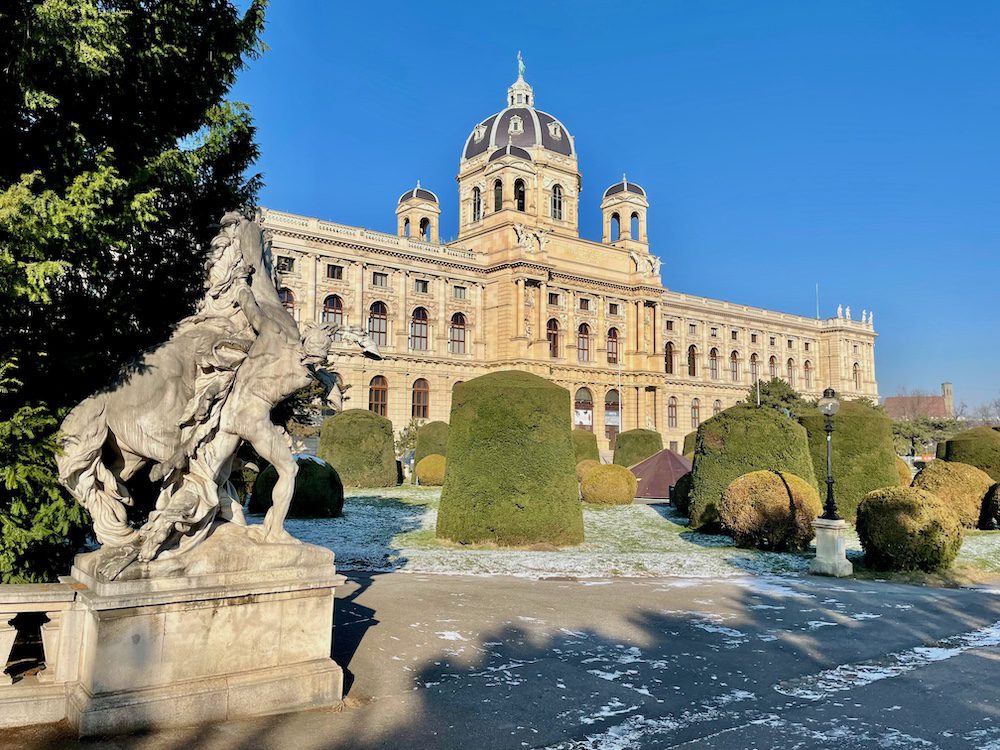Vienna - Going for a stroll
Video - Vienna in Winter
A combination of footage taken in the Stadtpark (City Park) and WW2 Soviet Memorial. Needless to say, at roughly around the -10C mark, it was a tad cold.
Stadtpark
Stadtpark (City Park) is one of the city’s most beloved public parks, known for its beautiful landscapes, historic monuments, and cultural significance. The park is home to numerous monuments and statues honouring famous Austrian artists, musicians, and writers. One of the most famous landmarks is the golden statue of Johann Strauss II, while other notable figures that have been immortalised include Franz Schubert, Franz Lehar, and Hans Canon. Located within Stadtpark is the historic Kursalon Hübner, a Renaissance-style building constructed in the 1860s.

Burggartern
Originally part of the imperial palace grounds, the Burggarten was transformed into a public park in the early 20th century. Located adjacent to the Hofburg Palace, it offers a blend of both natural beauty and cultural heritage. One of the most iconic features of the Burggarten is the monument dedicated to Wolfgang Amadeus Mozart unveiled in 1896. Another prominent feature of the public space is the The Palmenhaus, an Art Nouveau greenhouse built between 1901 and 1907.

Maria Theresien Platz & Museum Quarter
Maria Theresien Platz is situated between the Ringstrasse & the Museumsquartier. The Kunsthistorisches Museum (Museum of Art History) and the Naturhistorisches Museum (Museum of Natural History), on either side of the square are identical in design and were constructed during the late 19th century. At the centre of the square stands the grand Maria Theresa Monument, dedicated to Empress Maria Theresa, the only female ruler of the Habsburg dominions. The monument was unveiled in 1888 and is one of Vienna’s most iconic landmarks.

Rathauspark & surrounds
Rathauspark is a prominent public park located in front of the Vienna City Hall (Rathaus) in the heart of Vienna. The park was designed in the late 19th century and opened to the public in 1873. It was created as part of the city’s expansion and beautification efforts during that period. One of the key events held there is the annual Vienna Christmas Market. As I wandered through the park, the dismantling of the ice skating rink provided a sense of how gigantic the markets were.

Volksgarten
Volksgarten is a historic and beautifully landscaped public park located in the heart of Vienna, opposite the Vienna Parliament Building. Opened to the public in 1823, it is situated on the site of the former city fortifications and is one of Vienna’s first public parks. One of the most prominent features of Volksgarten is the Theseus Temple, modelled after the Temple of Hephaestus in Athens and completed in 1823. As part of the Hofburg Palace complex, it is a great spot to rest up before heading back off to explore more of Vienna.

The Prater & Danube
The Prater is one of Vienna’s most renowned recreational areas, covering over 6 million square metres & was opened to the public by Emperor Joseph II in 1766. The Wurstelprater is the world’s oldest amusement park, dating back to 1766. The most iconic feature of the Wurstelprater is the Riesenrad (Giant Ferris Wheel), which stands 65 metres tall. Built in 1897, it has been featured in many films, most notably the classic movie “The Third Man.” Last stop was the Danube, as it seemed inappropriate not to briefly visit the famous watercourse.

The Graben
The Graben dates back to Roman times, originally serving as a defensive trench. Over the centuries, it evolved into a major commercial and social centre. The Graben is flanked by impressive Baroque and Neoclassical buildings, showcasing Vienna’s rich architectural heritage. One of the most prominent landmarks on the Graben is the Plague Column (Pestsäule), a striking monument erected in 1693 to commemorate the end of the Great Plague of Vienna. During the Christmas season, the street is beautifully decorated with festive lights and stalls, creating a magical atmosphere.






























































